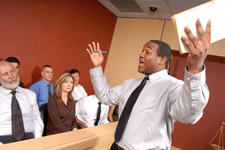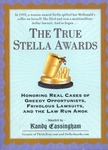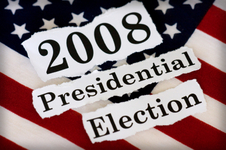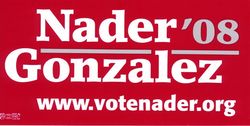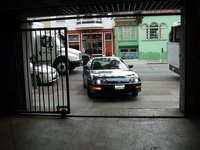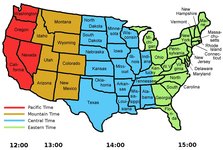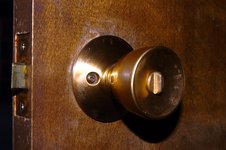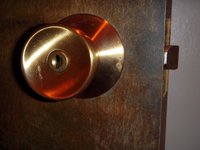 |
| Angelika/Mike Schilli |
Michael Readers in Germany have probably heard of the incredible US court case from 1994 against the fast food chain McDonald's that a woman had brought, because she had spilled scalding hot coffee on her lap due to her own clumsiness. The woman was named Stella Liebeck and has become a symbol for the abuse of the American court system. In memoriam of this landmark case, Author Randy Cassingham regularly hands out the so-called "Stella Award" to the most outrageous court cases, and he has compiled the awarded cases in the book The True Stella Awards in an entertaining and educational way.
A liability lawsuit can be quickly filed here in the US, and it is customary that the plaintiff does not have to pay anything even if the judge dismisses the case or if the accused company is acquitted. One just needs to find a lawyer who smells money in the circumstances and takes on the case and costs against a success fee of up to 50% of the possibly awarded damages sum. No risk for the plaintiff!
In America, it is not the judge who decides whether a defendant is guilty, but, as already described in Rundbrief 09/2002, Otto Normalverbraucher in a twelve-member jury. Members of the jury think: "Well, let's give this poor guy a nice sum of money, who knows, maybe I'll sue a bad and powerful company myself one day and then I'll get a cut too!" What Otto doesn't consider here is that companies calculate the costs of their offerings accordingly and simply pass them on to consumers through price increases.
The victims of this abuse of the judicial system are often doctors who can no longer save themselves from patient lawsuits in states like Kansas and simply move elsewhere, where there are not hordes of good-for-nothings waiting for the slightest misdiagnosis to squeeze out tens of thousands of dollars through lawsuits. Doctors of course have insurance to cover this, but premiums are constantly increasing due to the permanent abuse. As a result, there is now an acute shortage of doctors in rural areas of Kansas.
The legal principle of Joint and Several Liability provides another lever for scammers of all kinds. "Joint Liability" means that, for example, both partners of a married couple are responsible for repaying a loan taken out. "Several Liability" means that, for example, two companies involved in a project are each liable for their respective share if something goes wrong. The rule of "Joint and several liability" which is in effect in 46 of the 50 states allows the plaintiff to use a mixed tactic in their lawsuits: In the case of "Pisco vs. Coors", for example, a drunk teenager died and the mother sued three parties: his girlfriend who lent him her car, her mother who bought her the car, and the beer company Coors, whose beverage the teenager had been drinking. This sounds crazy, but if it had been determined that Coors was only 1% at fault, the company would be liable for the total damage under "Joint and several liability" because Coors has much more money than the other parties. When Coors stood up and threatened to sue the mother and her lawyer on basis of filing a "frivolous lawsuit", the gang of scammers dropped the demands against the beer manufacturer.
In the book, the following case hasn't been recorded because it is too new: In 2005, a certain Roy Pearson sued a small Korean immigrant-run dry cleaning business in Washington DC for an astonishing 67 million dollars because the family business had lost the pants of a suit he had brought in for cleaning. The case actually went to court in 2007, was dismissed, but the Koreans were left with $83,000 in legal fees. In America, you don't automatically get those fees reimbursed if you win, you have to request it and fight for it in court. The immigrants then chose to forego that, as the case itself had made international waves and sympathetic citizens had covered the costs with donations. The plaintiff, incidentally, was a judge himself, who later lost his job because of the case. He is still suing against it today.
The coffee-spilling Stella, by the way, was initially awarded 2.86 million dollars by the jury of the proceedings. A judge in most states can then adjust the amount if he finds that the jury granted excessive amounts, and that's what he did: $640,000 was the verdict. What Stella ultimately got, however, is not publicly known, as she reached an out-of-court settlement with McDonald's. Companies often do this, even if it is costly for them, so that the damage amount is not be made public. Otherwise, hordes of copycats would swiftly come with more lawsuits.
Barack Obama, 44th President of the USA
Angelika Miracles still happen. In November 2008, American voters propelled Barack Obama into the White House with a solid majority. Starting in January, a Democrat will finally hold the highest office in the state again. Not only that, the Democrats further increased their majorities in the Senate (6 seats) and House of Representatives (20 seats). The voters finally punished the disastrous policy of George Bush and his Republican party.
Until the end, I didn't believe in an Obama victory, even though the polls indicated it leading up to November 4th. I generally don't trust polls. First of all, only certain people who have nothing else to do participate in polls and secondly, the person being polled can lie through their teeth without anyone noticing.
The so-called Bradley Effect was buzzing around in my head, namely the fact that white voters would not openly admit that they would not vote for a black candidate, because it is considered racist. The black former mayor of Los Angeles, Tom Bradley, after whom the phenomenon is named, ran for governor of California in 1992 and although he was ahead in the polls, he lost the election. Now of course I am glad that my pessimistic prediction did not come true and we were able to witness the historic event of the first black American being elected as the 44th President of the USA.
The whole country was ecstatic and not just in progressive San Francisco, people were dancing in the streets with joy. I always view mass outpourings of emotion with some skepticism, but even I sat teary-eyed in front of the television. The election victory of Barack Obama probably embodies American ideals and the American dream like no other. A man with a white mother from Kansas and an African father from Kenya, whom he never actually saw, who grew up in Hawaii and Indonesia and has a name that sounds very unusual even to American ears, manages with iron will and discipline to become President of the United States. The country, which has been battered by financial and energy crises and the Iraq war, can once again believe in itself and reinvent itself.
You may also be wondering why Barack Obama is always referred to as the first black president, since he actually has a multiethnic background (the term "biracial" is common in America), with a white mother and an African father. This is a sensitive topic in America. During the election campaign, there were some strange discussions, for example, whether Barack Obama presented himself as too white or too black. When Obama speaks of himself, he refers to himself as black. Two hundred years ago, the term "white" was used to refer to immigrants of European descent. Anyone who had only one black parent, grandparent, or great-grandparent at that time could be sold as a slave without valid emancipation papers and was therefore "black". By the way, most African Americans born in America today have a white American somewhere in their ancestry, and the genes have certainly mixed over time.
Incidentally, I am firmly convinced that McCain would have been sitting in the President's chair if the financial crisis had not intensified so dramatically shortly before the election and he had surrounded himself with better advisors. McCain is not exactly an expert in economics, and he made the glaring mistake of wanting to make the tax cuts introduced by Bush, which disproportionately favor the super-rich, permanent, even though he had voted against them in the Senate. In any case, he threw overboard what people appreciated about him: his ability to work with Democrats in the Senate and not to stick to party lines when it came to ideas.
He was one of the few Republicans who voted against drilling in the "Arctic National Wildlife Refuge," but then shouted "Drill, Baby, Drill" during the election campaign. He had also sworn to run a clean campaign. But when he was behind Barack Obama in the polls, smear campaigns appeared in television ads. McCain was in the dilemma that he won the nomination of his own party by pandering to the ultra-conservative base, but lost the election because he did not convince the independent voters, without whom no one can get into the White House. His radical right-wing views didn't catch and he lost his credibility.
Ultimately, it seems that the gamble with Sarah Palin as Vice President didn't pay off. Yes, the ultra-conservatives still flock to her, and I fear that we will hear more from the lady from Alaska in the future. Probably McCain would have been better off with Joe Lieberman, the senator from Connecticut who officially functions as an independent Democrat in the Senate. It is rumored that McCain wanted Lieberman, but his advisor team then forced him to take Palin.
Now Barack Obama is really taking on a heavy legacy. The economy is in an absolutely desolate state, the housing market is in ruins, the American infrastructure is whistling out of the last hole, the budget deficit is growing from day to day and the American auto industry and the health care system are on the brink of collapse. Not to mention the chaos in Afghanistan and Iraq and the upcoming challenges regarding scarce and expensive energy. A lot is coming to the man and the expectations are high. We hope that they finally get something sorted out in Washington, because the stars couldn't be more favorable: Senate, House of Representatives and President in democratic hands. Maybe we'll get a health insurance for everyone after all. The times certainly require radical changes and great ideas. We'll see if Barack Obama has the necessary foresight, courage and good assertiveness. He is rather known as a pragmatist and a man of the middle.
Nader and the Endless Campaign
Angelika In the United States, only two parties dominate the political scene: Democrats and Republicans. Other parties like the Greens have never really been able to gain a foothold in this country. Nevertheless, candidates from small, unknown third parties or so-called independents keep trying to get elected to the White House, even though their chances of winning are almost non-existent.
Most of the time they receive 1-3% of the votes and are not taken seriously. One particularly persistent person in this area is Ralph Nader. The now 74-year-old has already run for the presidency four times (1996, 2000, 2004, 2008). Nader first made a name for himself as a strict consumer advocate and filed lawsuits against the auto industry to make cars safer. The excellent documentary "An Unreasonable Man" shows how Nader mutated from a celebrated consumer advocate to a stubborn activist who lost sight of reality. His most controversial candidacy was in 2000, the year of the election debacle between Al Gore and Bush (Rundbrief 12/2000). Many were angry that Nader did not give up his candidacy, even though it was clear that he would cost Gore votes. Nader eventually received 2.7% of the votes in 2000. Especially in Florida, where the election result was so close, this was significant. Some even go so far as to hold Nader responsible for Bush's election victory. This year he amusingly chose Matt Gonzalez, the San Francisco activist and lawyer who ran against our current mayor Gavin Newsom in 2003 (Rundbrief 12/2003) as his potential vice president.
The sticker in Figure 8 was actually given to me by a young woman in Dolores Park around the corner from our house, who was campaigning for her dream candidate. In one thing I have to give Nader full credit: smaller parties in the US are often held back by lots of obstacles. So Republicans and Democrats routinely appear on the ballot of each state, while candidates from third parties have to submit special voter petitions, among other things. Hats off to so much enthusiasm!
Top Product: Garage Door Opener
Michael In San Francisco, parking spots are scarce and therefore spots in underground garages can cost up to $400 a month. Expensive, yes! But driving home and breezing into an underground garage in the middle of the entertainment and shopping district we live in, while others fight for parking spots is priceless. But getting out of the car to open the garage door is obviously extremely uncool.
If you have a multicode garage opener in your car, you can quickly press a button on the remote and the garage door will slowly move aside while the car rolls casually over the sidewalk edge onto the heavy iron gate. Passersby wonder: which multimillionaire is coming home here? The founder of Oracle? The dictator of Microsoft? But no, it's just little Michael with his 170 horsepower Acura Integra. 80s music is blasting from the radio, Orchestral Maneuvers in the Dark (OMD), Call my Name.
Suddenly the scene is swarming with sunglass-wearing security guards in Armani suits, who politely but firmly shoo away the passers-by and wave the car in. Headlights come on, the engine roars, Michael has the habit of accelerating quickly in the garage on more in! Everyone laughs! Brake lights come on. Quickly and almost silently the heavy steel gate closes again. From the outside it looks as if nothing has happened.
Okay, now my imagination has run wild, but this garage door opener is really practical. You can order it for $10 on the internet at aaaremotes.com and just have to adjust the internally set code to the receiver on the garage door, which rolls the iron gate aside with a motor. With the multicode transmitter, this is a so-called dip switch with 10 different switches, which either stand on 0 (down) or 1 (up), so everyone can program their own garage code. Of course, that's not secure, because there are only about 1000 possibilities, but it scares off most thieves. If you get such a thing from the landlord, you can just order a second one on the internet and set the number of the first one in the second one. Of course, I also have a remote control in the side pocket of my backpack, so I can open the garage door with an unmistakably cool hand movement at the push of a button when I come home from work by bike. Passers-by are always dazzled in amazement on how this works!
Time Zones
Michael It has become less common now, but it still happens that someone from Germany calls us in the middle of the night and then wonders loudly why we don't answer the phone and they get the answer machine instead. San Francisco is nine hours behind Germany in terms of time. So if someone in Germany thinks at noon, hey, I'll quickly call Angelika and Michael, then it's three o'clock in the morning here. That's why we have set our phone silent.
Americans have fewer problems with time zones, because they're growing up with them. The time difference between the East and West coast is three hours. So, when the stock exchange opens in New York at 10am local time, it's still 7am here and I'm sitting in my pajamas in front of the computer typing in my stock purchases. When it's five o'clock in the afternoon here, I would never think of calling someone in New York in the office, because there it's already 8pm and people have gone home for the day. On New Year's Eve, the New Year's countdown in New York comes to us at 9pm on TV. Spooky!
There are a total of four different time zones: Pacific Time (PST, West Coast), Mountain Time (Denver +1), Central Time (Ohio +2), and Eastern Time (EST, +3, East Coast). So if it's noon in San Francisco, it's 1 PM in Denver, 2 PM in Ohio, and 3 PM in New York.
The main air time for TV shows is a 8pm, but by the time it's 8pm in San Francisco, the New Yorkers are already sitting in front of the TV with their nightcaps on, since it's already 11pm there. In order to maximize advertising revenue, popular TV series must run at 8pm local time, so the TV stations feed the movie into the cable multiple times: once at 8pm on the East Coast and then again with a three-hour delay on the West Coast.
When announcing new television shows nationally in newspapers (see Figure 12) or on billboards, it often says something like "Fridays 8/7c" as air time. This means that the cable companies broadcast the show at 8 PM Eastern Time and then three hours later, at 8 PM Pacific Time, again. Americans don't use a 24-hour clock, so they say "8" instead of "8 PM". Even without the addition of "pm", it is clear in this case that it is not a show at 8 AM. And the "8" in this case refers to both the East and West coasts, as it is two different broadcasts! However, this fact is omitted, the only important thing is that the television viewer knows when to turn on the box. In the "Central Time Zone" there is no extra broadcast for historical reasons, so people in Ohio have to watch the show at 8 PM Eastern Time, which is 7 PM in their time. If someone from Ohio reads the "7c" in the advertisement, they know to ignore the "8" and turn on the TV at 7 PM.
The Mountain Time Zone, however, appears to be so insignificant that the television stations make no mention of it. However, a source in Denver assured me that cable there runs the East Coast broadcast an hour delayed.
For example, let's take the show "The Tonight Show" with Jay Leno, a talk show not unlike the German Harald Schmidt Show. It is recorded daily at 4:30 PM local time (Pacific Time) in the NBC studio in California. The broadcast in New York begins at 10:35 PM local time (Eastern Time). Trivia question: At what time does the mountain man in Denver have to turn on the TV to watch the show? You'll find the answer at the end of this newsletter (Rundbrief 11/2008). For more insights into time zones, on Wikipedia, under Effects of Time Zones on North American Broadcasting there is an extensive explanation of this phenomenon.
The Fair Credit Reporting Act
Michael In the U.S., when buying a house or leasing a car, the lender will check the customer's so-called credit report to make sure they are credit worthy and not in the habit of squandering away borrowed money. This American equivalent to the German Schufa is managed by three different private companies in the US: Equifax, Experian and Transunion. We already explained the details in Rundbrief 05/2004.
Consumer associations also advise that every American check their own credit report once a year so that they can immediately detect if something is wrong and take countermeasures. Until recently, there used to be a fee for private individuals of about $30 to view their credit records on the Internet with the three companies.
Politicians have realized that there is a lot of abuse with credit data and it would be very careless to omit the annual review. However, it is not quite fair to burden the citizen with the cost, and a new law was enacted, the Fair Credit Reporting Act, which mandates that the three companies provide this service free of charge once per year.
On the official website http://annualcreditreport.com, the citizen enters their personal data and is then subsequently directed to the websites of Equifax, Experian and Transunion, each of which disclose the data the have stored on the citizen. The whole thing is somewhat clumsily implemented and the companies repeatedly and hypocritically ask if you don't want to pay money for a more detailed service, but if you always click "No" persistently, the data actually comes out for free. Not included in the package, however, is the so-called "Credit Score", a number between 300 and 850, which still costs money, but is irrelevant if you're just examining the data for inconsistencies.
Beware: Do not fall for the similarly sounding website freecreditreport.com, it is a private company that charges $14.95 per month for a service that runs free for a week but then automatically renews. It has absolutely nothing to do with the free legal credit report. The correct page for the free Credit Report is annualcreditreport.com. Do not confuse them!
Proposition Number 8 (Same Sex Marriage)
Angelika While people in San Francisco were dancing in the streets to celebrate Obama's victory, many were disappointed by another vote: the hotly contested Proposition 8 (Proposition=Referendum) received a narrow majority. In California, voters not only cast their votes for the president, but also for various referendums. Proposition 8 amends the California Constitution so that a marriage can explicitly only exist between a man and a woman. So, whoever is for Proposition 8 is against same-sex marriage, and whoever is against Prop 8 is for same-sex marriage. Don't get confused!
52% of California citizens said "yes" to Proposition 8. You may remember that only in May of this year the highest California court allowed same-sex marriage and in the meantime, 18,000 same-sex couples have said "I do" in California (Rundbrief 07/2008).
Immediately, the analysis started of who had voted against same-sex marriage. In an irony of fate, the higher voter turnout of the black Californian population, who wanted to cast their vote for Obama, seemed to mean the end of same-sex marriage at the same time, since 70% of this population group voted for Proposition 8. However, the proportion of blacks in California is relatively small (6%). Generally, religious affiliation or frequent church attendance was a better indicator. Latinos, who are usually Catholic, also voted overwhelmingly for Proposition 8.
Now the last word has not yet been spoken, because the case goes back to the highest California court. Just today the judges decided that they will deal with whether the 18,000 legally closed same-sex marriages remain valid and whether Proposition 8 is really an amendment to the constitution or a change to the constitution. This may seem like splitting hairs to you now, but if the judges decide that it is equivalent to a constitutional amendment, Proposition 8 is invalid. A change of the constitution can only be put to a vote by the voters if a two-thirds majority of the legislature has voted for it beforehand, while for an amendment, a voter petition by signatures is sufficient. The opponents of Proposition 8 argue that it is a change of the constitution, since fundamental rights of a population group are withdrawn by simple majority vote. So the bickering continues.
Open Studios and Berkeley Art Center
Angelika In October and November, I dragged Michael from one exhibition opening to the next. As I mentioned before, every October, artists open their studios as part of the so-called "Open Studios" to show their works (Rundbrief 12/2005). Now I don't own a studio, but I'm quite active in a photography group and so eight of us from our group decided to rent a space in Fort Mason, a kind of cultural center in San Francisco, and show our photos to the public for a weekend. I worked day and night to get everything ready, and Michael had to use some acrobatic skills to make his way through the living room. Unfortunately, our exhibition had to compete with the Blue Angels, the annual air show that takes place around Fort Mason. There was traffic chaos and a shortage of parking spaces and some photo fans didn't manage to get to us. Michael said that my marketing strategies still needed some improvement so that I could get my works out there. Well, practice makes perfect.
Now in November I am exhibiting 11 of my photos again with my photography group at the Berkeley Art Center. The theme of the exhibition is "Loss" and I am showing photos that I took in my grandmother's house after her death. Something nerve-wracking was that I even had to give a lecture on my photos. We were hosting a so-called artist talk. But the audience was friendly and interested.
A screwdriver opens the door lock
Michael The locks on bedroom doors in America look quite different than in Germany. For example, to lock the door in Figure 17 from the inside, you turn the small cylinder in the middle of the door handle a quarter turn clockwise. After that, the door knob can no longer be turned and the lock can no longer be opened.
What I didn't know for a long time is that you can easily open these common door locks from the outside with a screwdriver. That's probably a safety mechanism so that small children, or adults who behave like small children, don't lock themselves in and then can't get the door to open again.
Here's a trick: You simply stick a regular screwdriver from the outside into the opening that looks like a keyhole, and turn it a quarter turn to the right -- snap, the door knob turns and the door opens. A huge party fun!
That was the newsletter!
Solution to the Time Zone Trivia Question
And now for the resolution of the trivia question on time zones above: "Jay Leno" runs in Denver at 9:35 PM. It is the one-hour delayed East Coast broadcast, which airs in New York at 10:35 PM. One hour delay makes it 11:35 PM and at that time it is two hours earlier in Denver, making it 9:35 PM. I bet none of you math-dummies figured that out!
Be greeted by your friends from the "Pacific Time" time zone.
Angelika and Michael
|
|
|
|
All Editions:
2023 148 149 150 151 152
2022 143 144 145 146 147
2021 138 139 140 141 142
2020 133 134 135 136 137
2019 129 130 131 132
2018 125 126 127 128
2017 120 121 122 123 124
2016 115 116 117 118 119
2015 111 112 113 114
2014 106 107 108 109 110
2013 101 102 103 104 105
2012 96 97 98 99 100
2011 91 92 93 94 95
2010 85 86 87 88 89 90
2009 79 80 81 82 83 84
2008 73 74 75 76 77 78
2007 66 67 68 69 70 71 72
2006 59 60 61 62 63 64 65
2005 54 55 56 57 58
2004 49 50 51 52 53
2003 43 44 45 46 47 48
2002 36 37 38 39 40 41 42
2001 28 29 30 31 32 33 34 35
2000 20 21 22 23 24 25 26 27
1999 13 14 15 16 17 18 19
1998 7 8 9 10 11 12
1997 1 2 3 4 5 6
1996 0


